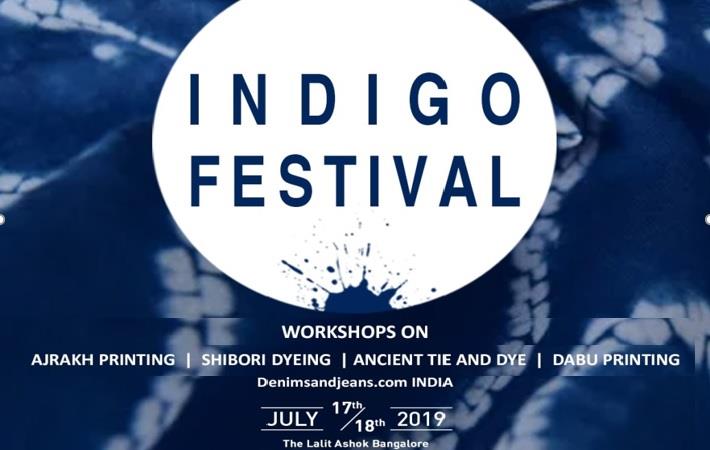
A total of four traditional indigo arts—ajrak printing, shibori dyeing, ancient tie and dye, and dabu printing—will be showcased during the third edition of the show on both days i.e. on July 17-18, 2019. Limited number of visitors will be able to participate in these workshops.
Ajrak is the name of a block printed cloth with deep crimson red and indigo blue background, bearing symmetrical patterns with interspersed unprinted sparkling white motifs. The term ‘ajrak’, may be derived from ‘azrak’, meaning blue in Arabic, as blue happens to be the one of the principal colours in ajrak printing. More than a fabric, ajrak is a Sindhi tradition; found in daily usage such as hammocks and bedsheets to duppattas, scarves, and even gifts as a token of respect. The highly valued ajrak has also been made in Kutch for the Maldharis or cattle herders’ communities since the time Khatris migrated from Sindh in the 16th century.
Japan has its own rich history of resist dyeing, known as shibori. One of the shibori techniques is similar to the bandhani dots, but there are many, many more. Not only tied, the fabric may also be clamped, pleated and stitched before dyeing, thus producing an enormous range of designs. The shibori process has four steps, consisting of design, stitching, tightening and dyeing. The secret behind this ancient art of tie and dye is the desire to apply dye to a piece of cloth but not completely. It is this desire that has given rise to different techniques of tie and dye.
Since the days of Indus Valley Civilisation, tie and dye is a very popular method of dyeing clothes known all over the world. This term was coined in the middle of the 20th century. But what the West does not know is the fact that this art of dyeing clothes into beautiful patterns and colours has been practised in India since ages. Bandhani is an art of resisting total dyeing of a piece of cloth by tying it in different styles before dipping it inside the boiling dye. Sequential steps in tie and dye and even application of a little dye before using different ways of resist only shows the desire to obtain different results from tie and dye. Batik print is only a subset of tie and dye which evolved with resist dyeing through use of wax.
The art of dabu printing is from Rajasthan. It is a special variation of mud resists printing, whose origin can be traced back to about 675 A.D. Dabu printing is very labour intensive and involves several stages of printing and dyeing; the end result is therefore very unique and beautiful. Dabu printed fabrics display a subtle and extraordinary beauty and depth which is appreciated around the world. It has captured the imagination of modern-day designers. (RKS)
Fibre2Fashion News Desk – India